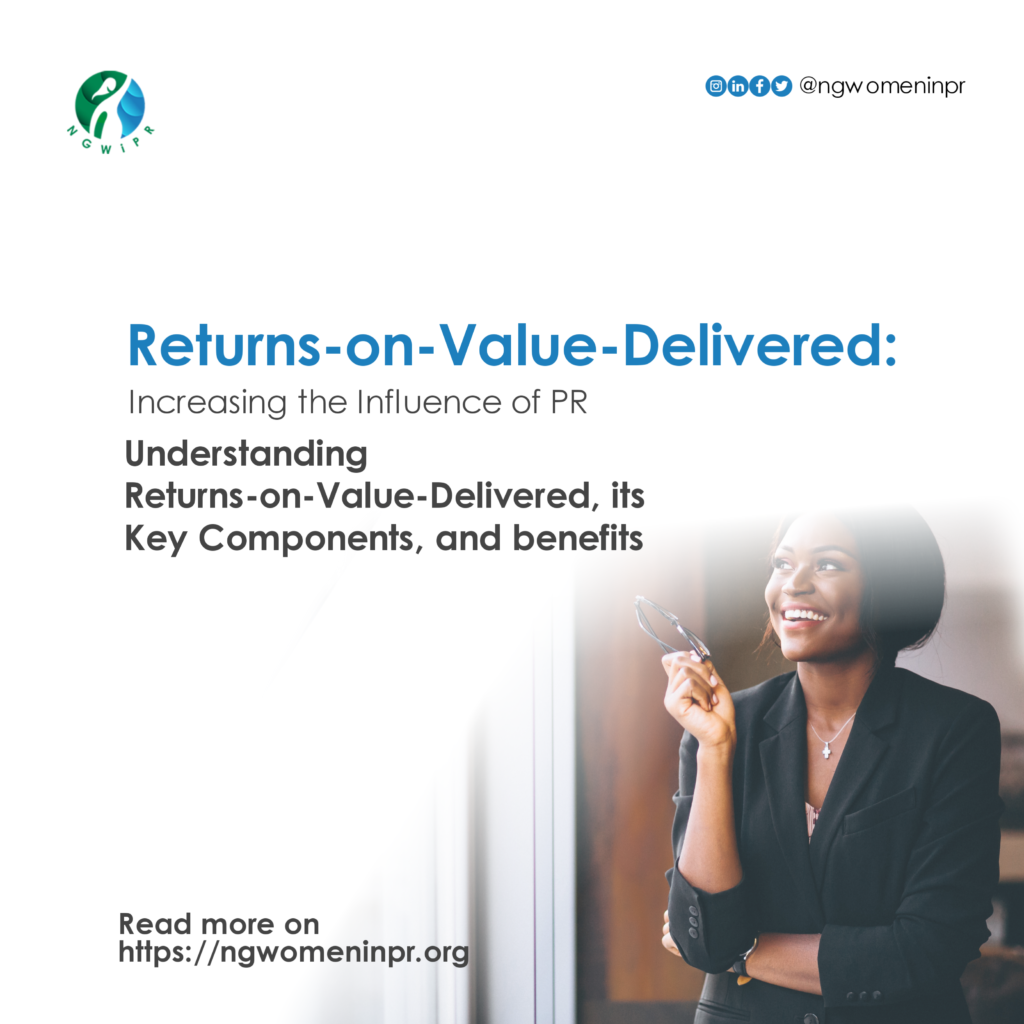In the ever-changing field of public relations, professionals are always searching for novel methods to demonstrate the efficacy and value of their work. Returns-on-Value-Delivered (ROVD) provides a more comprehensive framework for measuring the impact and effectiveness of public relations efforts than traditional metrics such as media coverage and impressions. ROVD enables PR professionals to demonstrate their strategic contributions to business objectives by emphasising measurable outcomes and the value created for organisations. This article examines the significance of ROVD in contemporary public relations.
Understanding Returns-on-Value-Delivered
Returns-on-Value-Delivered is a methodology that seeks to quantify the contribution of public relations initiatives to the overall value proposition of an organisation. It acknowledges that the true value of public relations extends beyond superficial metrics such as media mentions or social media engagement and instead focuses on outcomes that align with business objectives, reputation management, and stakeholder relationships.
Key Components of ROVD
1. Goal Alignment: ROVD necessitates explicitly aligning PR efforts with particular business objectives. PR strategies should be designed to directly contribute to the organisation\’s overarching objectives, such as enhancing brand perception, expanding market share, and driving client acquisition.
2. Measurable Outcomes: ROVD emphasises measurable outcomes that demonstrate the value generated by PR activities. These outcomes may include increased website traffic, lead generation, sales conversions, customer loyalty, stakeholder engagement, and favourable brand perception adjustments. PR professionals can effectively demonstrate their impact by using key performance indicators (KPIs) aligned with business objectives.
3. Qualitative Assessment: ROVD aims to assign measurable value to PR initiatives by tying them to the organisation\’s bottom line. This involves determining the monetary value of outcomes, such as calculating the advertising value equivalence of earned media or determining the return on investment of influencer partnerships. By quantifying the economic impact of PR efforts, professionals can demonstrate their direct contributions to the success of their organisations.
4. Attribution and Impact Analysis: ROVD enhances the credibility of public relations by providing a data-driven method for measuring performance. By demonstrating the value of PR activities, professionals can enhance their standing within organisations, secure budget allocations, and promote a culture of accountability.
Benefits of ROVD in Public Relations
1. Strategic Determination: By employing ROVD, PR professionals gain insight into the most effective strategies and tactics for generating value. This data-driven comprehension enables practitioners to make informed decisions, allocate resources effectively, and refine their strategies to maximise impact.
2. Enhanced Collaboration: ROVD promotes collaboration across organisational functions. PR professionals can forge deeper partnerships with other departments, such as marketing, sales, and finance, by demonstrating the measurable value of their efforts. This partnership ensures that PR strategies are incorporated into broader business initiatives, resulting in more cohesive and effective campaigns.
3. Continuous Improvement: ROVD facilitates ongoing evaluation and refinement of PR strategies. By monitoring and analysing outcomes, organisations can identify areas of improvement, leverage successful tactics, and adapt their PR approaches to achieve greater effectiveness over time.
Returns-on-Value-Delivered represents a paradigm shift in public relations by highlighting the significance of measurable outcomes and value creation. By adopting this methodology, public relations professionals can progress beyond traditional metrics and demonstrate their work\’s strategic contributions to their organisation\’s success. ROVD enables professionals to align their efforts with business goals, measure measurable outcomes, and assign monetary value to initiatives. Ultimately, this strategy strengthens public relations as a critical driver of long-term business development by fostering credibility, accountability, and collaboration within organisations.

